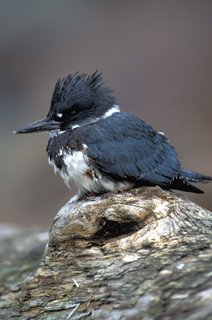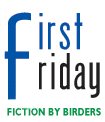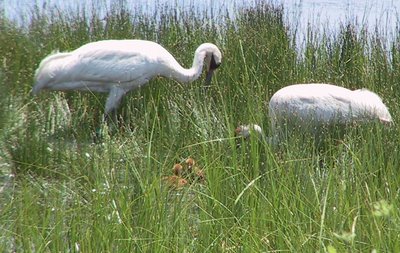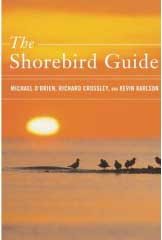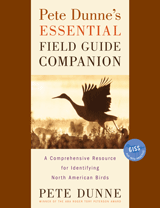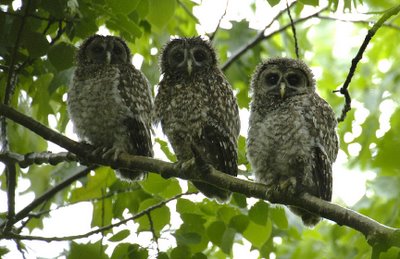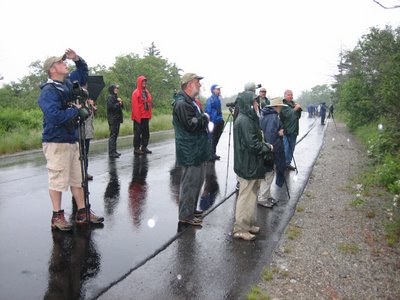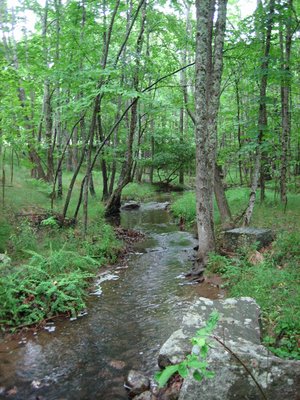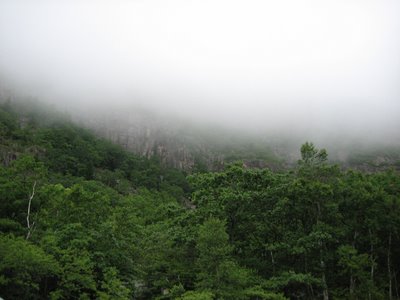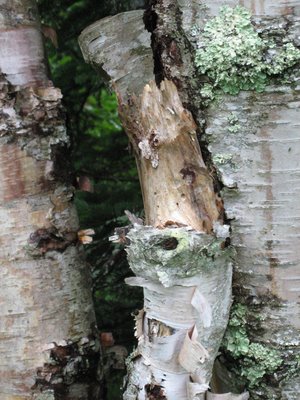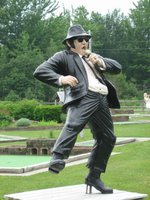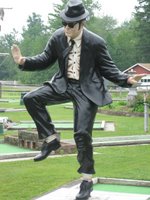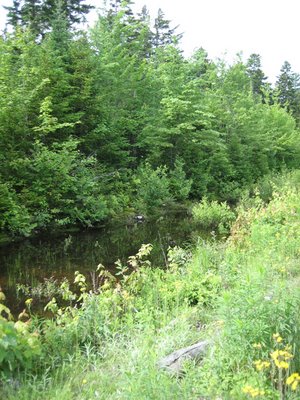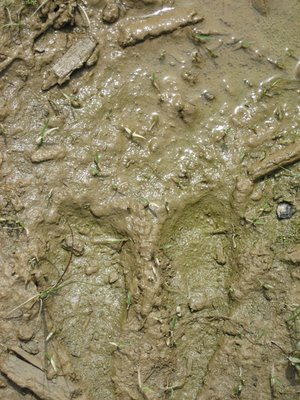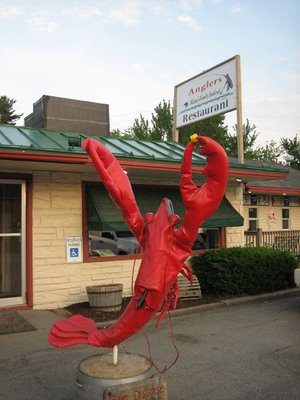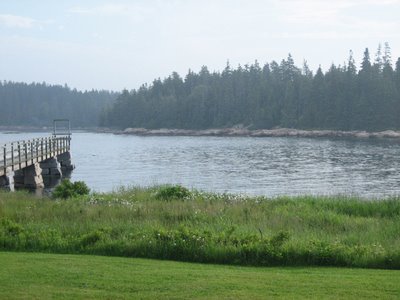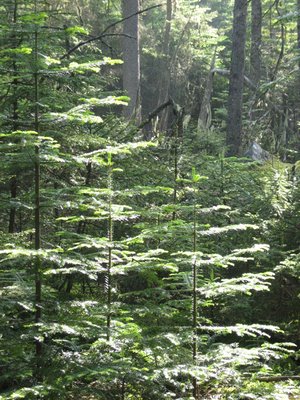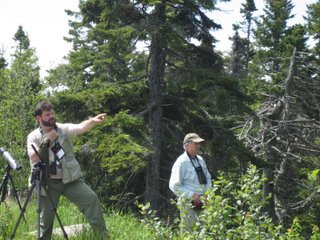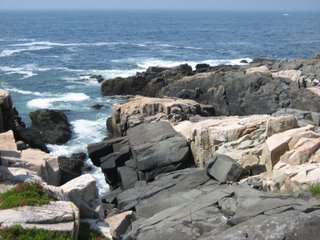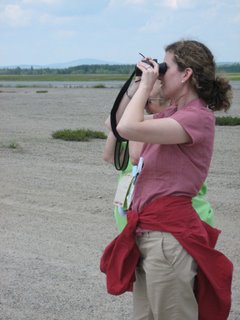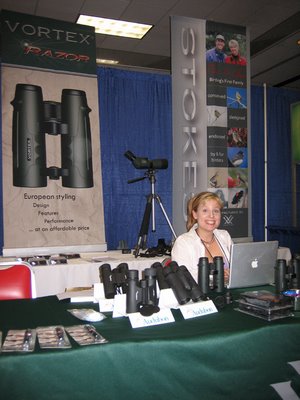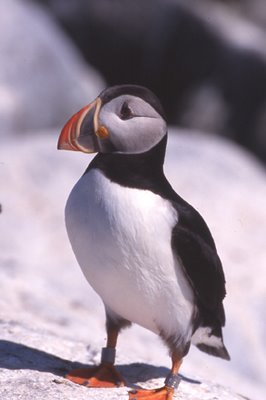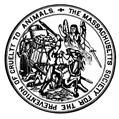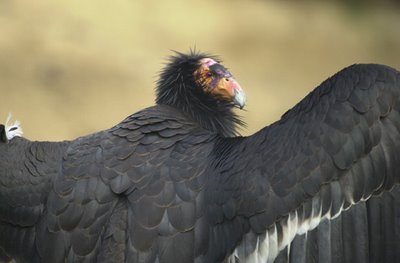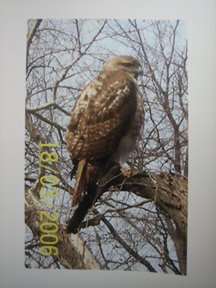WildBird readers chose the Birder of the year from the 2005 Backyard Birders and Forum Birders, described in the November/December 2005 issue. (Look at The Lister’s Forum and Birder’s Back Yard in each issue for your chances to become Birder of the Year.)
As the 2005 Birder of the Year, college student Leigh Johnson of
Newport Beach, Calif., received a Bushnell Elite 8x43 binocular, a Bushnell Elite spotting scope, round-trip airfare for two to
south Texas and a rental car, courtesy of
Bushnell Performance Optics. She and her mother received two-night accommodations at
Alamo Inn in Alamo, two-night accommodations at
Vieh’s Bed & Breakfast in San Benito and guided outings.
In the July/August 2006 issue of
WildBird, Johnson recounted the trip.

The trip to the Rio Grande Valley of Texas was an incredible experience. We--my mom, Amy Hooper and I--started off the trip by spotlighting for
Common Pauraque on Saturday with Sheridan Coffey and Martin Reid. We walked along the water at
Bentsen-Rio Grande Valley State Park. When we finally saw a pauraque fly, it became my first lifer of the trip. My nonbirding mom unexpectedly enjoyed the outing so much that she chose to bird with us for the rest of the trip.
Sheridan and Martin enthusiastically guided us for the first two days. On Sunday, we first stopped at Anzalduas County Park (956-585-5311) and saw
Black-bellied Whistling-Ducks, a quirky species. The
Turkey and
Black Vultures (a lifer) riding a thermal over the park provided an unexpected surprise. We also saw
Golden-fronted Woodpeckers, a
Northern Parula,
Couch’s Kingbirds,
Great Kiskadees and a magnificent
Scissor-tailed Flycatcher.
On our way back to Bensten, I spotted my life
Harris’ Hawk. Once at Bensten, we got our first look at
Green Jays, and on a feeder, we watched a
Long-billed Thrasher, an
Altamira Oriole and an
Indigo Bunting take turns. In a photo blind, we heard
Plain Chachalacas calling from all sides.
Next stop:
Santa Ana National Wildlife Refuge, where we birded with intern Heidi Trudell. Life birds included
Black-crested Titmouse and
Roseate Spoonbill. We sat to wait for the day’s last lifer, a
Buff-bellied Hummingbird.
On Monday, we visited the hawkwatch at Santa Ana and saw
Broad-winged Hawks,
Mississippi Kites and many others overhead. The lift-off was breathtaking. Up the river at Chapeno, we picked up
Ringed Kingfisher from a distance as well as
Brown Jays, one juvenile and one adult. We later parted ways with Martin and Sheridan and headed to San Benito.
Tuesday morning, Pat Wade joined us as our guide, and we quickly got my first lifer of the day: Tamaulipas Crows carrying nesting material. Then we went to the
Sabal Palm sanctuary, where I got my life
Carolina Wren singing on a branch. We also saw the controversial Gray-crowned Yellowthroat.
The
Aplomado Falcon (unbanded) and the
White-tailed Hawk provided roadside treats on the way to South Padre Island, an amazing place. My last lifer of the trip was
Upland Sandpiper off-island, and like my first Texas lifer, I lost a pint of blood to the mosquitoes in order to get it.
I gained more than 40 new birds, enjoyed fantastic experiences and met some superb people. To top it off, my mother gained a better understanding of who I am and what birding is. I’d say that alone made it a successful trip.
(For pictures and more details about the trip, visit the April 8, 9, 10 and 11 posts.—Ed.)
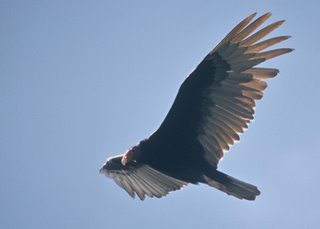 As mentioned before, NASA planned to trap Black and Turkey Vultures temporarily in preparation for the July 1 launch of the shuttle Discovery. That effort began yesterday, and officials expect about 150 vultures to spend a short time behind bars and out of harm's way. That was one of various measures meant to ensure that birds do not strike the shuttle and possibly damage it.
As mentioned before, NASA planned to trap Black and Turkey Vultures temporarily in preparation for the July 1 launch of the shuttle Discovery. That effort began yesterday, and officials expect about 150 vultures to spend a short time behind bars and out of harm's way. That was one of various measures meant to ensure that birds do not strike the shuttle and possibly damage it.
